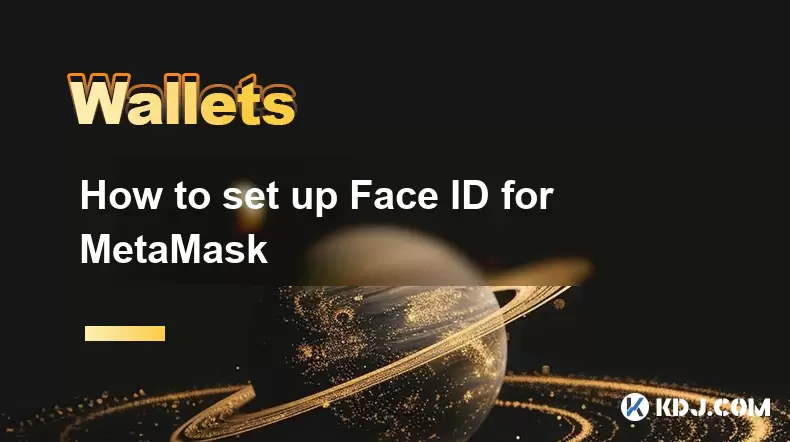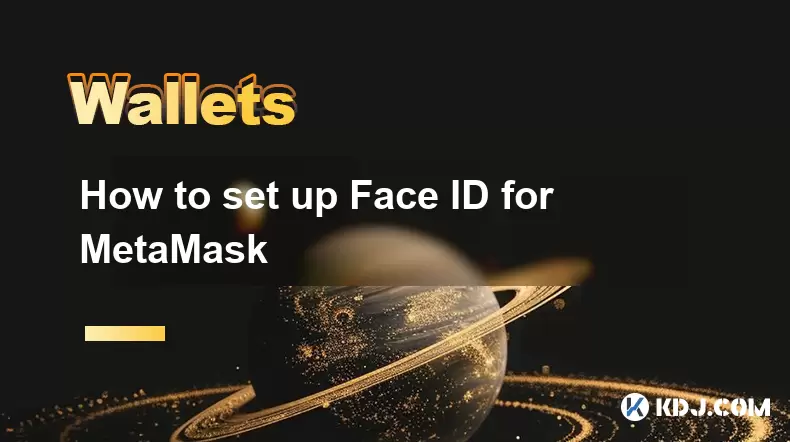-
 Bitcoin
Bitcoin $118600
-2.59% -
 Ethereum
Ethereum $4282
-0.42% -
 XRP
XRP $3.129
-4.21% -
 Tether USDt
Tether USDt $0.0000
0.01% -
 BNB
BNB $805.4
-1.80% -
 Solana
Solana $174.3
-5.77% -
 USDC
USDC $0.9998
-0.01% -
 Dogecoin
Dogecoin $0.2230
-6.33% -
 TRON
TRON $0.3466
1.70% -
 Cardano
Cardano $0.7745
-5.73% -
 Chainlink
Chainlink $21.37
-3.53% -
 Hyperliquid
Hyperliquid $42.93
-7.25% -
 Stellar
Stellar $0.4324
-4.94% -
 Sui
Sui $3.660
-7.17% -
 Bitcoin Cash
Bitcoin Cash $591.6
2.72% -
 Hedera
Hedera $0.2467
-7.04% -
 Ethena USDe
Ethena USDe $1.001
0.00% -
 Avalanche
Avalanche $22.92
-6.14% -
 Litecoin
Litecoin $118.8
-3.79% -
 Toncoin
Toncoin $3.378
-0.46% -
 UNUS SED LEO
UNUS SED LEO $9.011
-1.15% -
 Shiba Inu
Shiba Inu $0.00001294
-5.81% -
 Uniswap
Uniswap $11.24
0.53% -
 Polkadot
Polkadot $3.870
-6.16% -
 Cronos
Cronos $0.1662
-1.68% -
 Dai
Dai $1.000
0.02% -
 Ethena
Ethena $0.7915
-5.62% -
 Bitget Token
Bitget Token $4.414
-1.65% -
 Monero
Monero $259.3
-3.85% -
 Pepe
Pepe $0.00001120
-8.29%
How to use the CoinJoin function on Trezor Model T?
CoinJoin enhances Bitcoin privacy by mixing transactions, but it's not fully anonymous; Trezor Model T users should choose reputable mixers and expect higher fees and longer times.
Mar 30, 2025 at 03:08 am

Understanding CoinJoin and its Privacy Implications
CoinJoin is a privacy-enhancing technique used to obfuscate the origin and destination of cryptocurrency transactions. It works by combining multiple transactions from different users into a single, larger transaction, making it extremely difficult to trace individual funds. This is particularly useful for enhancing the privacy of Bitcoin and other cryptocurrencies that operate on transparent blockchains. The Trezor Model T, a hardware wallet known for its security features, offers integration with CoinJoin services, allowing users to leverage this privacy-enhancing technology directly from their device. However, it's crucial to understand that while CoinJoin significantly improves privacy, it doesn't offer absolute anonymity.
Selecting a Compatible CoinJoin Mixer
Before initiating a CoinJoin transaction, you need to choose a reputable CoinJoin mixer. Not all mixers are created equal; some may have questionable security practices or may not offer the level of privacy you desire. Research is crucial to ensure you're using a service with a proven track record and a strong commitment to user privacy. Look for mixers that have transparent operations, strong security measures, and a positive reputation within the cryptocurrency community. The choice of mixer will often dictate the specific steps involved in the CoinJoin process.
Preparing Your Trezor Model T for CoinJoin
Before starting the CoinJoin process, ensure your Trezor Model T is properly configured and updated. Update your firmware to the latest version to benefit from the latest security patches and compatibility improvements. Also, ensure you have sufficient funds in your Trezor Model T wallet to cover the transaction fees associated with CoinJoin, which can vary depending on network congestion and the chosen mixer. Keep your device offline and securely stored whenever not in active use.
Step-by-Step Guide to Using CoinJoin on Trezor Model T (Illustrative Example)
The exact steps will vary depending on the CoinJoin mixer you choose. This is an illustrative example, and you should always refer to the specific instructions provided by your chosen mixer.
- Step 1: Connect your Trezor Model T: Connect your Trezor Model T to your computer using a USB cable.
- Step 2: Launch the CoinJoin Mixer Software: Open the CoinJoin mixer software on your computer. This software will typically be provided by the mixer you selected.
- Step 3: Select your Trezor Model T: The software should detect your Trezor Model T. Select it as your preferred wallet.
- Step 4: Select the Amount: Specify the amount of Bitcoin you wish to mix using the CoinJoin service.
- Step 5: Choose Privacy Settings: Some mixers allow you to adjust the level of privacy. Higher privacy levels typically involve longer mixing times and higher fees.
- Step 6: Initiate the CoinJoin Transaction: Review the transaction details and confirm the transaction on your Trezor Model T. This step requires multiple confirmations on your device to ensure security.
- Step 7: Monitor the Transaction: After initiating the transaction, monitor its progress through the mixer's interface. This may take some time, depending on the network conditions and the chosen privacy settings.
This is a general example. The specific steps might differ based on the chosen CoinJoin service. Always consult the service's documentation for precise instructions.
Understanding Transaction Fees and Timeframes
CoinJoin transactions typically involve higher fees than standard Bitcoin transactions. This is because the process involves multiple steps and requires more computational power. The time it takes to complete a CoinJoin transaction also varies, depending on the chosen mixer, network congestion, and the number of participants involved. Be prepared for potentially longer processing times and higher fees compared to regular transactions.
Security Considerations and Best Practices
Security is paramount when using CoinJoin. Always use a reputable and well-vetted CoinJoin service. Never share your Trezor Model T seed phrase with anyone, and ensure your computer is free from malware. Keep your Trezor Model T updated with the latest firmware and use strong, unique passwords for all your accounts. Regularly back up your seed phrase, but store it securely and offline. Understanding the risks and limitations of CoinJoin is also essential. While it significantly enhances privacy, it's not a foolproof method for achieving complete anonymity.
Choosing the Right CoinJoin Mixer
Selecting the right CoinJoin mixer is crucial. Factors to consider include reputation, security features, transaction fees, mixing time, and user experience. Research different mixers and read reviews before making a choice. Prioritize mixers with transparent operations and a strong security track record. Consider the trade-off between privacy levels and transaction fees and time.
Frequently Asked Questions
Q: Is CoinJoin completely anonymous?
A: No, CoinJoin significantly enhances privacy but doesn't guarantee complete anonymity. Sophisticated analysis could potentially link transactions, especially with large amounts.
Q: Are there any risks associated with using CoinJoin?
A: Yes, risks include choosing an untrusted mixer, encountering higher fees, and longer transaction times. Thorough research and due diligence are crucial.
Q: How does CoinJoin protect my privacy?
A: CoinJoin mixes your transaction with others, making it difficult to trace the origin and destination of your funds.
Q: What are the transaction fees for CoinJoin?
A: Fees vary depending on the chosen mixer and network conditions. They are typically higher than regular transactions.
Q: How long does a CoinJoin transaction take?
A: Transaction times vary depending on the mixer, network congestion, and chosen privacy settings. It can take significantly longer than a standard transaction.
Q: Is CoinJoin available for all cryptocurrencies?
A: Currently, CoinJoin is primarily available for Bitcoin and some other cryptocurrencies, but not all. Check the compatibility of your chosen mixer.
Q: Can I use CoinJoin with other hardware wallets?
A: Some CoinJoin mixers support other hardware wallets, but compatibility varies. Check the mixer's documentation for supported devices.
Q: What if something goes wrong during the CoinJoin process?
A: Contact the CoinJoin service's support team for assistance. Having a backup plan and understanding the potential risks is advisable.
Disclaimer:info@kdj.com
The information provided is not trading advice. kdj.com does not assume any responsibility for any investments made based on the information provided in this article. Cryptocurrencies are highly volatile and it is highly recommended that you invest with caution after thorough research!
If you believe that the content used on this website infringes your copyright, please contact us immediately (info@kdj.com) and we will delete it promptly.
- Memecoins, Corporate Treasury, and the New Frontier: A NYC Perspective
- 2025-08-12 14:30:13
- Dogecoin, Presale, Surge: Riding the Meme Coin Wave
- 2025-08-12 11:10:12
- Dogecoin, Tron, and the ROI Reality Check: What's a Crypto Investor to Do?
- 2025-08-12 11:15:12
- Ethereum Layer-2 Scaling Competition Heats Up as ETH Breaks $4K
- 2025-08-12 10:30:12
- China Regulation, Stablecoins, and BNB Presale: Navigating the Crypto Landscape
- 2025-08-12 11:30:12
- Meme Coins, Investment, and Token Burns: What's Hot in 2025?
- 2025-08-12 10:30:12
Related knowledge

How to manage your portfolio in Exodus wallet
Aug 08,2025 at 10:07pm
Understanding the Exodus Wallet InterfaceThe Exodus wallet is a non-custodial cryptocurrency wallet that supports a wide range of digital assets. When...

How to reset your MetaMask password
Aug 08,2025 at 01:28pm
Understanding the MetaMask Password Reset ProcessMany users confuse the MetaMask password with the seed phrase or private key, but they serve differen...

How to buy Dogecoin on MetaMask
Aug 08,2025 at 03:42am
Understanding Dogecoin and MetaMask CompatibilityDogecoin (DOGE) is a popular meme-based cryptocurrency that operates on its own blockchain, originall...

How to switch between networks in Trust Wallet
Aug 09,2025 at 11:07am
Understanding Network Switching in Trust WalletSwitching between networks in Trust Wallet allows users to manage assets across different blockchains, ...

How to set up Face ID for MetaMask
Aug 12,2025 at 02:42am
Understanding Face ID and Its Role in MetaMask SecurityMetaMask is a widely used cryptocurrency wallet that allows users to interact with the Ethereum...

How to set up Face ID for MetaMask
Aug 11,2025 at 09:28am
Understanding Face ID and Its Role in MetaMask SecurityFace ID is a biometric authentication system developed by Apple that uses facial recognition to...

How to manage your portfolio in Exodus wallet
Aug 08,2025 at 10:07pm
Understanding the Exodus Wallet InterfaceThe Exodus wallet is a non-custodial cryptocurrency wallet that supports a wide range of digital assets. When...

How to reset your MetaMask password
Aug 08,2025 at 01:28pm
Understanding the MetaMask Password Reset ProcessMany users confuse the MetaMask password with the seed phrase or private key, but they serve differen...

How to buy Dogecoin on MetaMask
Aug 08,2025 at 03:42am
Understanding Dogecoin and MetaMask CompatibilityDogecoin (DOGE) is a popular meme-based cryptocurrency that operates on its own blockchain, originall...

How to switch between networks in Trust Wallet
Aug 09,2025 at 11:07am
Understanding Network Switching in Trust WalletSwitching between networks in Trust Wallet allows users to manage assets across different blockchains, ...

How to set up Face ID for MetaMask
Aug 12,2025 at 02:42am
Understanding Face ID and Its Role in MetaMask SecurityMetaMask is a widely used cryptocurrency wallet that allows users to interact with the Ethereum...

How to set up Face ID for MetaMask
Aug 11,2025 at 09:28am
Understanding Face ID and Its Role in MetaMask SecurityFace ID is a biometric authentication system developed by Apple that uses facial recognition to...
See all articles

























































































